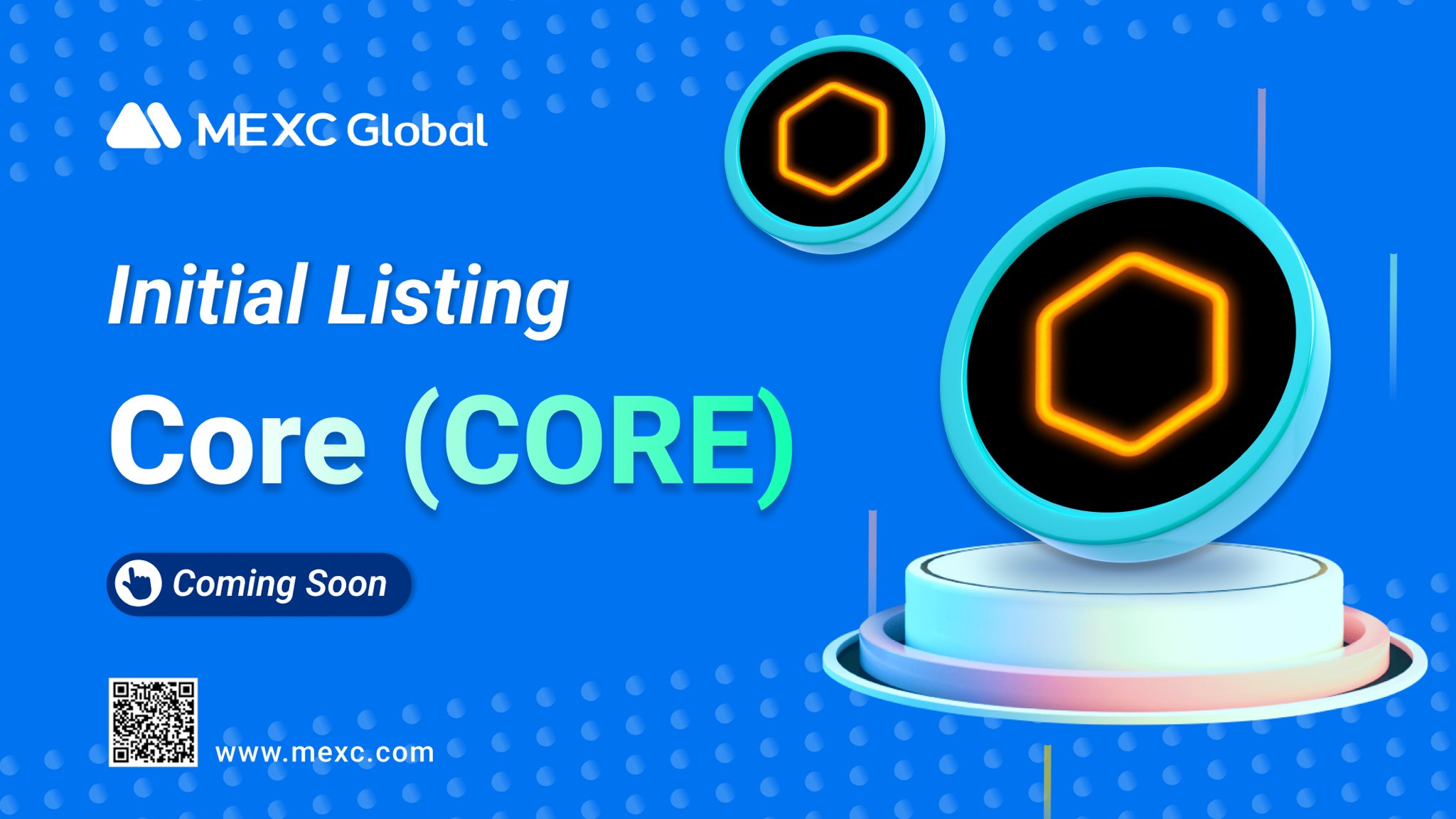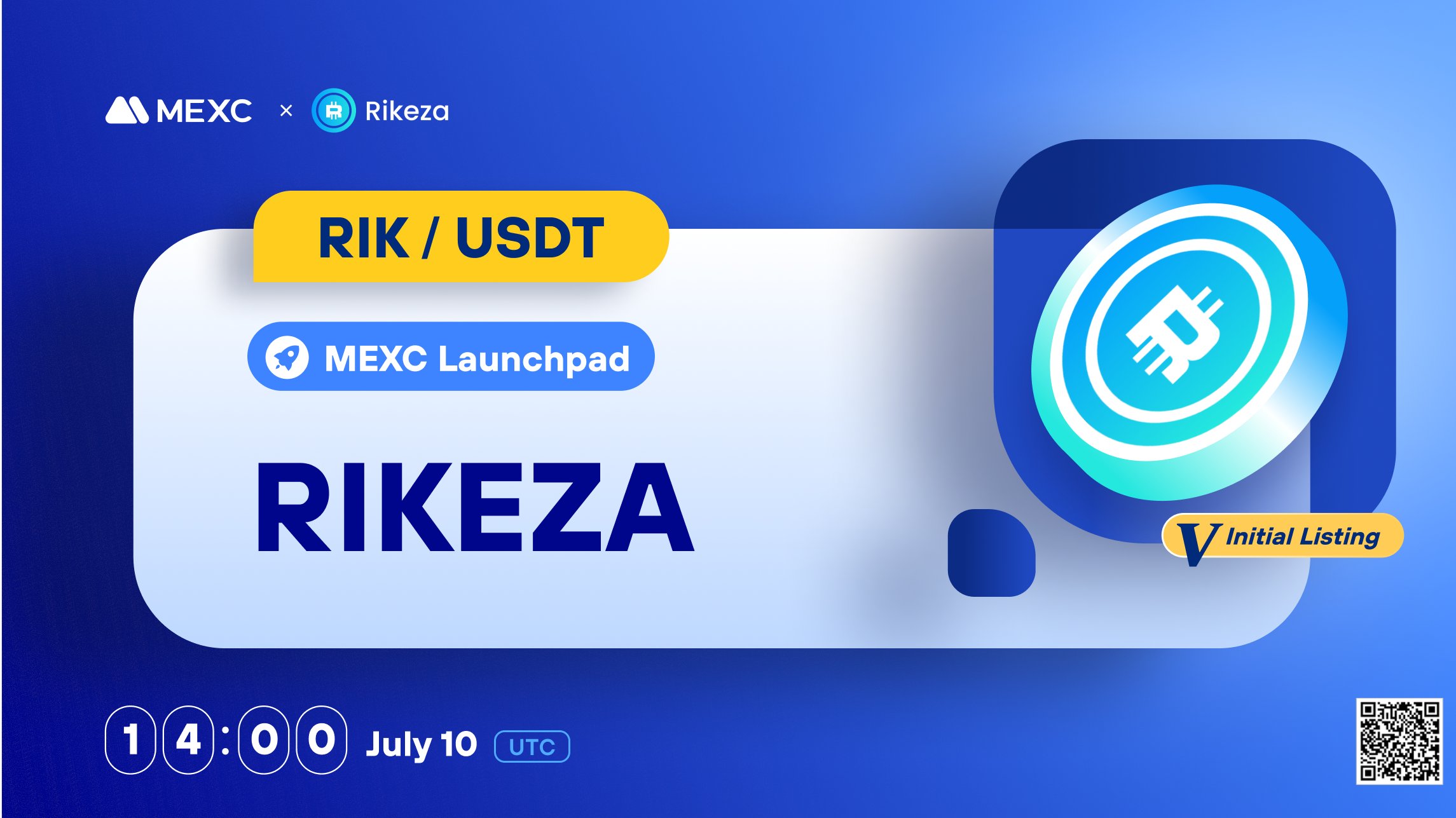
In today’s rapidly evolving digital landscape, data has become the new gold, yet most solutions fail to address critical challenges like data sovereignty, AI ethics, and true decentralization. CESS Network emerges as a groundbreaking solution that fundamentally reimagines how we store, share, and utilize data in the Web3 era.
This comprehensive guide explores CESS Network’s revolutionary approach to decentralized data infrastructure, its native CESS token, and why it represents the future of ethical AI and infinite storage capacity. Whether you’re a blockchain enthusiast, enterprise looking for secure storage solutions, or AI developer seeking privacy-preserving platforms, this article provides everything you need to understand CESS Network’s transformative potential.
Key Takeaways
- CESS Network is a pioneering Layer-1 blockchain that combines infinite storage capacity with ethical AI development, featuring a modular architecture with CESS Protocol Suite and XESS AI Protocol Suite
- Four specialized node types power the ecosystem: Consensus nodes using R²S mechanism, Storage nodes with PoIS/PoDR² algorithms, CDN nodes for millisecond content delivery, and TEE nodes for security validation
- Revolutionary storage technologies ensure data integrity: Proof of Idle Space (PoIS) validates unused storage contributions while Proof of Data Reduplication and Recovery (PoDR²) guarantees near-zero data loss through intelligent redundancy
- Privacy-preserving AI capabilities through CESS AI-LINK enable organizations to collaboratively train AI models without exposing sensitive data, addressing critical challenges in healthcare, finance, and government sectors
- Comprehensive data sovereignty features including Proxy Re-encryption Technology (PReT), Multi-Format Data Rights Confirmation (MDRC), and Location-Based Storage Selection (LBSS) ensure regulatory compliance and user control
- CESS Token serves multiple critical functions: network security through staking, storage incentives, governance participation, transaction fees, and cross-platform value exchange across EVM and WebAssembly ecosystems
- Total supply of 10 billion tokens with strategic distribution prioritizing network participants (45% to Storage and Consensus nodes) while supporting development, community growth, and market stability
- Competitive advantages over established players like Filecoin, Arweave, and Storj through integrated storage, AI capabilities, and content delivery in a single comprehensive platform
Table of Contents
What is CESS Network and CESS Token?
CESS Network is a pioneering decentralized data infrastructure built with its own Layer-1 blockchain, designed to support infinite storage capacity and enable ethical AI development. At its core, CESS combines blockchain technology with advanced storage protocols to create a comprehensive ecosystem that addresses the fundamental challenges facing data management in the digital age.
The CESS ecosystem operates through a sophisticated modular architecture featuring two distinct protocol suites: the CESS Protocol Suite and the XESS AI Protocol Suite. The CESS Protocol Suite encompasses three critical layers – the Blockchain Layer providing consensus and security, the Distributed Storage Resource Layer managing global storage resources, and the Content Decentralized Delivery Network (CD²N) Layer enabling millisecond-speed data retrieval. Meanwhile, the XESS AI Protocol Suite introduces cutting-edge AI capabilities through the CESS AI Agent Hub and CESS AI-LINK, facilitating secure, privacy-preserving collaborative model training across the network.
CESS Token serves as the native cryptocurrency powering this entire infrastructure, enabling network coordination, security through staking mechanisms, and value exchange across a global network of participants. The token plays multiple critical roles: securing the network through validator staking, facilitating protocol-level payments, enabling governance participation, and creating sustainable economic incentives that align all stakeholders within the ecosystem.
CESS Network vs CESS Token Differences
| Aspect | CESS Network | CESS Token |
|---|---|---|
| Definition | Complete decentralized data infrastructure ecosystem with Layer-1 blockchain | Native cryptocurrency powering the CESS Network |
| Scope | Entire platform including storage, AI, consensus, and delivery systems | Digital asset for transactions, staking, and governance |
| Function | Provides data storage, AI training, content delivery, and blockchain services | Enables payments, network security, and ecosystem participation |
| Components | Four node types: Consensus, Storage, CDN, and TEE nodes | Single token with multiple utilities |
| Technology | R²S consensus, PoIS/PoDR² proofs, CD²N, AI-LINK protocols | ERC-20 compatible token with staking capabilities |
| Purpose | Infrastructure for Web3 data management and ethical AI | Economic mechanism for network operation and incentives |
What Problems Does CESS Network Solve?
1. Data Centralization and Vulnerability Crisis
Traditional cloud storage systems concentrate vast amounts of data in centralized servers controlled by major corporations, creating single points of failure and vulnerability. Users surrender control over their data to third parties, facing risks of unauthorized access, censorship, and data breaches. CESS Network eliminates these risks by distributing data across a global network of storage nodes, ensuring that no single entity can control or compromise user data.
2. AI Ethics and Privacy Preservation Challenges
The rapid advancement of AI technology has created significant challenges around data privacy, consent, and ethical usage. Organizations struggle to collaborate on AI development while maintaining data sovereignty and compliance with privacy regulations. CESS addresses these challenges through its XESS AI Protocol Suite, particularly the CESS AI-LINK system, which enables privacy-preserving federated learning where participants can collaboratively train AI models without exposing their original data.
3. Storage Scalability and Cost Inefficiencies
Current storage solutions face limitations in scalability, high operational costs, and inefficient resource utilization. CESS Network solves these issues through its Smart Space Management system and Proof of Idle Space (PoIS) mechanism, which efficiently aggregates unused storage resources globally and optimizes their allocation based on demand.
4. Data Integrity and Disaster Recovery
Traditional systems often lack robust mechanisms for ensuring data integrity and recovery in case of failures. CESS implements the revolutionary Proof of Data Reduplication and Recovery (PoDR²) protocol, which ensures near-zero data loss rates through intelligent redundancy and automatic recovery mechanisms, maintaining high data availability even during network disruptions.

CESS Network Team Formation and Development History
CESS Network’s journey began in 2019 when a visionary global team from the UK, USA, India, China (Hong Kong), UAE, and Argentina united around a shared mission to reshape the digital landscape. Founded by innovators with deep expertise in cryptography, distributed storage, and computer science, the project emerged from a recognition that the digital world was becoming increasingly centralized and vulnerable to manipulation.
The founding team identified critical gaps in existing solutions: data was becoming trapped in centralized silos, AI development was raising ethical concerns about privacy and consent, and users were losing control over their digital assets. Driven by youthful energy and a commitment to meaningful impact, the CESS team set out to build technology that would challenge conventional approaches and redefine how data is stored, shared, and utilized.
From its inception, CESS has been guided by a clear mission: to create a secure, transparent, and high-throughput decentralized data value network that puts control back in the hands of users while enabling ethical AI development. The project’s development has been marked by continuous innovation, resulting in proprietary technologies like the R²S consensus mechanism, revolutionary storage proof algorithms, and the groundbreaking XESS AI Protocol Suite.
During development phases, CESS Network has utilized various testnet environments to validate its technologies. For developers and early adopters interested in testing the network capabilities, the CESS testnet uses specific token denominations for testing purposes, allowing comprehensive evaluation of storage nodes, consensus mechanisms, and AI protocol functionalities before mainnet deployment.

CESS Network Features and Node Types
1. Revolutionary Consensus and Blockchain Technology
CESS Network operates on its native Layer-1 blockchain featuring the innovative Random Rotational Selection (R²S) consensus mechanism. Unlike traditional proof-of-stake systems, R²S dynamically selects 11 validators per cycle based on node workload, staked tokens, and verifiable randomness, ensuring both security and decentralization. The blockchain supports both EVM and WebAssembly compatibility, enabling seamless integration across different ecosystem environments.
2. Advanced Storage Proof Mechanisms
The network implements two groundbreaking storage verification systems: Proof of Idle Space (PoIS) and Proof of Data Reduplication and Recovery (PoDR²). PoIS validates unused storage contributions from nodes through sophisticated cryptographic challenges, while PoDR² ensures data integrity and availability through intelligent redundancy mechanisms. These systems work together to create a storage network that is both secure and highly resilient against data loss.
3. Millisecond-Speed Content Delivery
CESS’s native Content Decentralized Delivery Network (CD²N) achieves enterprise-grade performance through a two-tier system of Retriever and Cacher nodes. Retriever nodes handle complex data processing and load balancing, while lightweight Cacher nodes provide distributed edge caching capabilities. This architecture enables millisecond-level data retrieval speeds that rival traditional centralized CDNs.
4. Privacy-Preserving AI Infrastructure
The XESS AI Protocol Suite introduces revolutionary capabilities for ethical AI development. The CESS AI Agent Hub serves as a decentralized entry point for AI agents across industries, while CESS AI-LINK enables Byzantine-robust federated learning where organizations can collaboratively train models without exposing sensitive data. This approach solves critical challenges around data privacy and regulatory compliance in AI development.
5. Data Sovereignty and Rights Protection
CESS implements comprehensive data sovereignty mechanisms including Proxy Re-encryption Technology (PReT) for secure data sharing, Multi-Format Data Rights Confirmation (MDRC) for copyright protection, and Location-Based Storage Selection (LBSS) for regulatory compliance. These features ensure that users maintain complete control over their data while enabling secure, authorized sharing when needed.

CESS Network Use Cases and Applications
1. Enterprise Distributed Storage Solutions
CESS Network provides enterprise-grade distributed storage services that offer significant advantages over traditional centralized cloud storage. Organizations can leverage the network’s Smart Space Management system to achieve cost-effective, scalable storage solutions with built-in disaster recovery and data sovereignty controls. The system’s ability to handle massive data volumes while maintaining security and compliance makes it ideal for enterprises requiring robust data infrastructure.
2. Privacy-Preserving AI Development and Training
The CESS AI-LINK protocol enables organizations to participate in collaborative AI training while maintaining strict data privacy. This is particularly valuable for industries like healthcare, finance, and government services where sensitive data cannot be shared directly but can contribute to collective AI model improvement. The Byzantine-robust architecture ensures security even in adversarial environments.
3. Decentralized Content Distribution and VR Streaming
CESS’s CD²N capabilities make it exceptionally suited for high-bandwidth applications like VR streaming media and content distribution. The network’s ability to deliver content at millisecond speeds while maintaining decentralization eliminates traditional bottlenecks and single points of failure, providing users with seamless, immersive experiences across virtual reality and augmented reality applications.
4. Blockchain Data Availability Services
As a Layer-1 solution, CESS can serve as a data availability layer for other blockchain networks, including Bitcoin, Ethereum, and other major chains. This capability allows blockchain networks to offload large datasets to CESS, reducing on-chain storage costs while maintaining security and accessibility through the network’s robust verification mechanisms.
5. Secure Data Marketplace and Monetization
CESS enables the creation of decentralized data marketplaces where users can securely share and monetize their data while maintaining control over access permissions. The network’s advanced encryption and rights management systems ensure that data transactions are transparent, traceable, and secure, creating new opportunities for data value creation and exchange.

CESS Tokenomics
CESS Network has a carefully structured tokenomics model designed to ensure sustainable network growth and fair value distribution among all participants:
Total Supply: 10 billion CESS tokens (fixed supply)
Token Distribution:
- 30% – Storage Nodes: Rewards for nodes providing storage capacity and data integrity services
- 15% – Consensus Nodes: Reserved for validators and consensus participants who secure the blockchain through the R²S mechanism
- 12.5% – Team & Advisers: Distributed to core development team members and strategic advisors who guide the project’s technical and business development
- 12% – Ecosystem & Community Growth: Dedicated to fostering community expansion, developer incentives, and ecosystem partnerships
- 10% – Foundation: Allocated for long-term protocol development, research initiatives, and network maintenance
- 10% – Early Backer: Allocated to early supporters and initial investors who backed the project development
- 5.5% – Market Development & Liquidity: Reserved for exchange listings, market making, and ensuring adequate token liquidity
- 5% – Influencer Nodes: Dedicated to community leaders and influencers who help promote network adoption and growth
This distribution model ensures that the majority of tokens (45%) are allocated directly to network participants who provide essential infrastructure services, while maintaining sufficient allocations for development, community growth, and market stability.
CESS Token Functions and Utilities
1. Network Security and Validation
CESS tokens serve as the primary security mechanism for the network through staking requirements. Consensus nodes must stake a designated amount of CESS tokens to participate in the R²S validator selection process, while nominators can stake smaller amounts to support validators and earn proportional rewards. This economic security model ensures that validators have substantial financial incentives to act honestly and maintain network integrity.
2. Storage Network Incentives and Rewards
Storage nodes receive CESS token rewards based on their contribution to the network, calculated through a formula that prioritizes active data storage while also rewarding idle space contributions. This incentive structure encourages nodes to not only provide storage capacity but also to actively store real user data, creating a more valuable and utilized network.
3. Governance and Protocol Evolution
CESS token holders participate in the network’s decentralized governance through the CESS DAO (Decentralized Autonomous Organization). Token holders can propose and vote on protocol upgrades, parameter changes, and strategic decisions that shape the network’s future development. This democratic governance model ensures that the network evolves according to community consensus rather than centralized control.
4. Transaction Fees and Network Utilization
CESS tokens function as the native currency for all network transactions, including data storage fees, retrieval costs, AI computation charges, and smart contract execution. The token serves as the economic backbone that coordinates resource allocation and ensures efficient network utilization across all service layers.
5. Cross-Platform Value Exchange
As CESS Network supports both EVM and WebAssembly compatibility, CESS tokens can seamlessly interact with other blockchain ecosystems, enabling cross-chain value transfer and interoperability. This functionality positions CESS as a bridge between different blockchain networks and traditional web services.

CESS Network Roadmap and Future Development
CESS Network’s roadmap focuses on expanding its technological capabilities and ecosystem adoption through several key initiatives. The network’s roadmap includes planned IPFS compatibility (targeted for Q4 2026), enabling seamless integration with existing distributed storage solutions and expanding interoperability across the Web3 ecosystem. Advanced security features including Proxy Re-encryption Technology (PReT) for secure data access are scheduled for Q3 2026, while comprehensive data ownership traceability through Multi-Format Data Rights Confirmation (MDRC) will be deployed by Q4 2026.
The centerpiece of CESS’s near-term development is the full deployment of CESS AI-LINK by Q4 2025, which will establish the network as a leading platform for privacy-preserving AI development. This initiative aims to enable organizations worldwide to collaborate on AI model training while maintaining strict data sovereignty and regulatory compliance.
CESS’s long-term vision extends beyond technical development to become the global standard for decentralized data infrastructure. The network aims to drive widespread enterprise adoption through strategic partnerships, regulatory compliance initiatives, and the development of industry-specific solutions. By focusing on ethical AI development and privacy preservation, CESS positions itself to lead the transition toward responsible data management practices that balance innovation with user rights and regulatory requirements.
The network’s commitment to progressive decentralization ensures that governance and control will gradually shift from the founding team to the broader community, creating a truly decentralized and sustainable ecosystem that can adapt to evolving technological and regulatory landscapes.

CESS Network vs Competitors Analysis
CESS Network operates in the competitive landscape of decentralized storage and data infrastructure, facing established players like Filecoin, Arweave, Storj, and The Graph. However, CESS differentiates itself through its comprehensive approach that combines storage, AI capabilities, and content delivery in a single integrated platform.
- Filecoin focuses primarily on decentralized storage markets using proof-of-spacetime consensus, but lacks the AI integration and millisecond content delivery capabilities that CESS provides. While Filecoin excels at incentivizing storage providers through market mechanisms, it doesn’t address the broader data infrastructure needs that enterprises require.
- Arweave offers permanent data storage with a pay-once, store-forever model, but its architecture doesn’t support the dynamic, high-performance applications that CESS enables through its CD²N network. Arweave’s focus on permanent archival storage contrasts with CESS’s emphasis on active data utilization and AI training.
- Storj provides distributed cloud storage with encryption and redundancy, sharing some similarities with CESS’s storage layer. However, Storj lacks the blockchain-native architecture, AI protocols, and governance mechanisms that make CESS a complete Web3 data infrastructure solution.
CESS Network’s Key Advantages:
CESS’s primary competitive advantage lies in its holistic approach to data infrastructure. Unlike competitors who focus on single aspects of data management, CESS provides an integrated solution that addresses storage, content delivery, AI development, and data sovereignty simultaneously. The network’s millisecond-speed retrieval through CD²N surpasses the performance of most decentralized alternatives, while the XESS AI Protocol Suite offers capabilities that no other decentralized storage network provides.
The R²S consensus mechanism and storage proof algorithms (PoIS/PoDR²) offer distinct advantages in terms of validator selection and data integrity compared to traditional consensus mechanisms. Additionally, CESS’s focus on regulatory compliance through features like LBSS and data rights protection positions it as the preferred choice for enterprises operating in regulated industries.
Conclusion
CESS Network represents a fundamental breakthrough in decentralized data infrastructure by creating the world’s first comprehensive platform that seamlessly integrates infinite storage capacity, ethical AI development, and millisecond-speed content delivery. Through its innovative R²S consensus mechanism, advanced storage proof algorithms, and revolutionary XESS AI Protocol Suite, CESS addresses critical challenges that have limited the adoption of decentralized technologies in enterprise and AI applications.
The network’s commitment to data sovereignty, privacy preservation, and regulatory compliance positions it as the infrastructure backbone for the next generation of Web3 applications. With its robust tokenomics model, comprehensive governance structure, and clear roadmap for technological advancement, CESS Network offers both immediate utility and long-term value for participants across the entire data lifecycle.
As organizations increasingly recognize the importance of data ownership, AI ethics, and decentralized infrastructure, CESS Network stands ready to serve as the foundation for this technological transformation. For investors, developers, and enterprises seeking to participate in the future of decentralized data infrastructure, CESS Network provides an unprecedented opportunity to engage with truly groundbreaking technology that prioritizes both innovation and responsibility.
Join MEXC and Get up to $10,000 Bonus!
Sign Up


